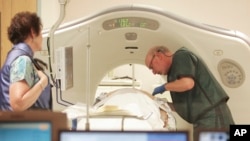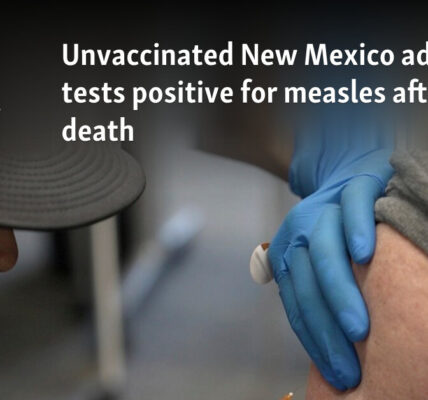A significant increase in the number of new cancer diagnoses is predicted for the year 2050.
Geneva —
According to the latest data from the International Agency for Research on Cancer (IARC), the number of new cancer cases is expected to increase by 77% by 2050, reaching over 35 million. This is a significant rise from the current estimate of 20 million new cases and 9.7 million deaths in 2022. The report was released on Thursday by the World Health Organization’s cancer agency.
The report, being released in advance of World Cancer Day on February 4th, predicts that the largest proportional rise in cancer cases will happen in areas with lower Human Development Index (HDI) rankings. This index is a measure created by the United Nations to assess a country’s level of economic and social development.
Freddie Bray, who leads the cancer surveillance division at IARC, predicts that the world’s population will increase from eight billion to 9.7 billion by 2050. This will greatly affect the number of new cancer diagnoses.
According to the speaker, there is a projected 142% rise in cancer cases by the year 2050 in low HDI countries, which are those with limited resources to handle the impact of cancer. The number of cancer-related deaths is also expected to nearly double in 2050.
The report identifies tobacco, alcohol, and obesity as significant contributors to the growing number of cancer cases worldwide. It also highlights air pollution as a major environmental threat.
Recent calculations indicate that lung cancer is the most prevalent form of cancer globally, with a projected 2.5 million new diagnoses in the year 2022. Female breast cancer comes in a close second, followed by colorectal, prostate, and stomach cancers.
According to the report, breast cancer was the most frequently diagnosed and primary cause of death among women, while lung cancer held this distinction for men.
According to Bray’s observation, approximately 20% of men and 20% of women will experience cancer during their lifetime. Additionally, about 11% of men and 8% of women will both develop and pass away from the illness.
The worldwide statistics show significant disparities in the impact of cancer, with individuals in impoverished and less developed nations facing the greatest risk. Isabelle Soerjomataram, the deputy head of IARC’s cancer surveillance division, emphasizes that this is especially evident in cases of breast cancer.
According to her, there is a significant disparity in breast cancer diagnosis and mortality rates between women in lower and higher HDI countries. Women in lower HDI countries have a 50% lower chance of being diagnosed with breast cancer, but they face a higher risk of death from the disease due to late detection and limited access to proper treatment.
A study conducted by the World Health Organization in 115 countries reveals that the majority of nations do not sufficiently fund cancer and palliative care services as part of their universal health coverage. This lack of funding disproportionately impacts marginalized and impoverished communities.
According to Andre Ilbawi, a WHO expert on cancer, healthcare spending is on the rise, especially for cancer. The use of advanced technologies, an aging population, and an increase in demand for complex services are putting a strain on health budgets. The high costs of cancer treatment often lead families into poverty due to out-of-pocket payments.
According to Ilbawi, individuals who are diagnosed with cancer and are informed that they have to cover the costs themselves are less inclined to seek assistance, undergo treatment, and follow through with their care.
According to him, this leads to a higher fatality rate and financial burden for countries, especially as the number of cancer cases rises. He also mentioned that governments have the power to disrupt this pattern by allocating resources towards cancer treatments.
He stated that cancer should not be a costly burden and should not result in death.
Now is not the moment to disregard. Instead, we must increase our efforts and commit to investing in cancer prevention and control. Otherwise, we will face even greater disparities than those we currently observe.
Additionally, Soerjomataram emphasized the importance of investing in preventive measures to combat the increasing worldwide prevalence of cancer and disparities in cancer outcomes.
It is increasingly important to focus on prevention when it comes to cancer, as simply treating the disease is not enough. According to the speaker, both treatment and ensuring access to healthcare are crucial in preventing cancer and reducing suffering from it.
Source: voanews.com




